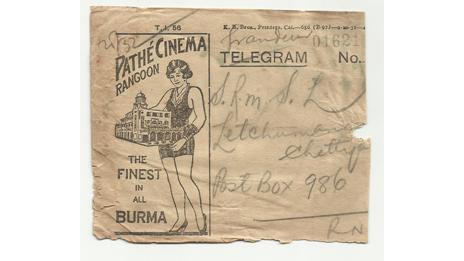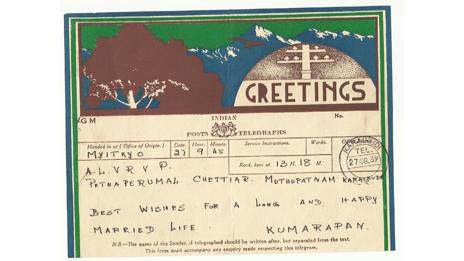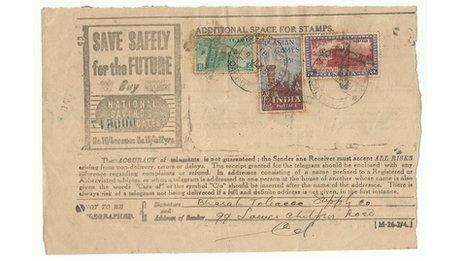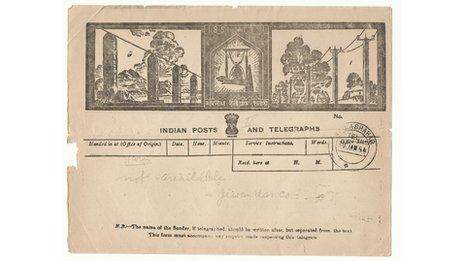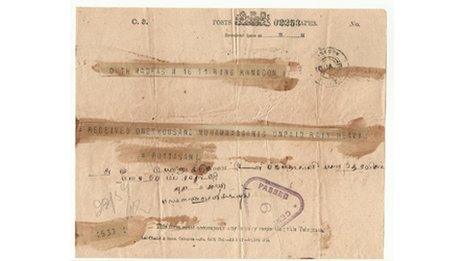Telegrams STOP: End of service delivering joy and heartache
- Published
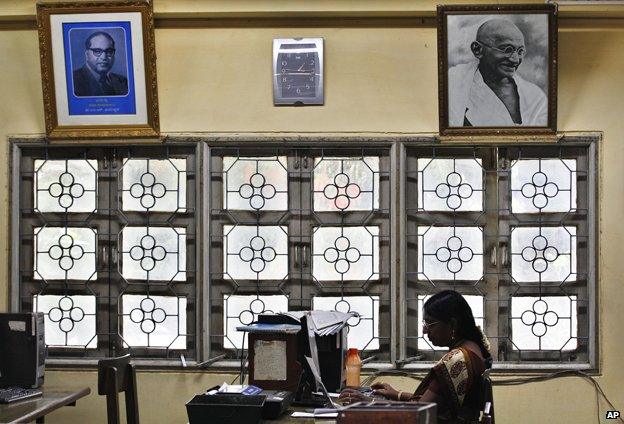
India's last telegram will be sent on Sunday night as the country's state-run telegraph service shuts down. It has been in decline for decades, but once touched the lives of millions of Indians every year, writes Geeta Pandey.
As a child growing up in Calcutta in the 1970s and 1980s, I always felt a sense of foreboding every time a knock on the door announced the arrival of a telegram.
My parents would be visibly worried as telegrams usually brought bad news, like the death of a relative. They would imagine the worst about their elderly parents in rural Uttar Pradesh until the square piece of paper reassured them that all was well back in the village.
For decades the main source of reliable and urgent communication, telegrams brought happy and sad news to millions of Indians every year.
The telegraph service started in 1851 when the British East India Company built a 30-mile (48km) electric telegraph line from the city of Calcutta to its suburb of Diamond Harbour, primarily for official use.
Over the next few years, telegraph lines were expanded to cover the entire country and in 1855, the service was opened for public use.
Its success was instant, says CV Gopinath, the former deputy director general of telegraph services.
The 1857 rebellion against the British, often described as the first war of India's independence, "failed because of this telegraph technology", he says. "Lord Dalhousie [the governor-general] once said that the telegraph saved India."
It meant they could order the mobilisation of troops and resources quickly and confidentially.
For more than a century thereafter, up until the end of the 1980s, telegrams were the fastest and most reliable form of communication.
In the early days, telegrams arrived written by hand with fountain pens, and mostly carried business messages. Today, a telegram is a computer printout.
It is the advent of newer, more modern technology that killed demand for telegraph services. The company has been losing billions of rupees a year. The last telegram will be sent at 22:00 India time (16:30 GMT) on Sunday 14 July.
"The new generation doesn't even know about telegrams," says Shameem Akhtar, senior general manager at the state-run telecommunications firm, BSNL.
At the Central Telegraph Office in Delhi's Eastern Court building, not far from India's parliament, the mood is clearly downbeat.
Jagdish Chand, who was a telegram messenger for 31 years, points to the row of offices at the back of the building and says: "More than 4,000 people worked here. There were hundreds of teleprinter machines and the room was generally so noisy that you had to shout in the ears of the person sitting next to you to be heard."
The machines are all gone, sold as scrap, and the the offices have fallen quiet, with only a handful of people around.
Om Dutt, who has been delivering telegrams since 1983, says he used to deliver 30-40 messages a day in the 1980s, but now manages less than half of that. "Then, it used to be like day even at night at the telegraph office, because there would be so many people, so many cars, bright lights."
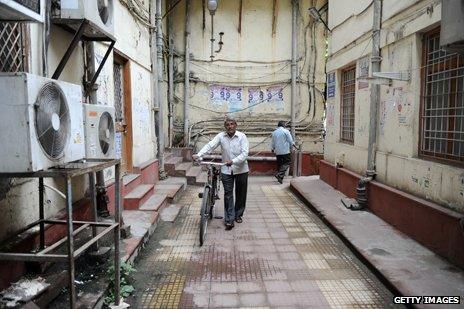
Om Dutt has been delivering messages since 1983
Fellow messenger Jagdish Chand adds: "Our work never stopped. It didn't matter whether it was raining or whether it was the 43C summer heat or the peak of winter - we went out to deliver telegrams whatever the weather."
In 1984, soon after Dutt and Chand started delivering telegrams, Prime Minister Indira Gandhi was assassinated.
"We got so many telegrams for Mrs Gandhi's house from all over the world, I had to deliver them in a sack," says Dutt.
"We received 7,000 to 8,000 telegrams a day," says Chand. "People everywhere had heard about the anti-Sikh riots [which broke out after Mrs Gandhi was killed by her Sikh bodyguards] and they were worried about their relatives and were trying to get in touch with them."
For three days, he says, they slept in their offices. "It was not safe to go out, but we wore our uniforms, had our identity cards and if we were stopped by the police, they would let us go because we were treated as emergency service workers."
Their work was not easy. "In some areas, people thought that telegrams were bringing bad news and they would pelt the messengers with stones. In one instance, some people threw a glass bottle at us," he says.
Mr Chand is obviously unhappy at the government's decision to stop telegrams.
"When I joined the telegraph service, I was a young man of 20. I married here, had children, sent them to school. This has been like my home. I have a couple of years to retire, but now my future's uncertain."
The authorities have said all of the nearly 1,000 workers will be redeployed, but Mr Chand still doesn't know where he will end up.
As the end of the service approaches, there has been a last-minute rush of telegrams for staff to sort and stamp, ready for delivery.
People from across the country have sent hundreds of telegrams over the past ten days to Telecommunications Minister Kapil Sibal, pleading with him to save the service.

Others, resigned that this is the end of the service as they know it, are rushing to send their last telegram.
Bulbul Tewari, 73, is filling in forms to send telegrams to her four grandchildren, aged between seven and 14, "so that when they are older, they realise that this is the way messages were sent, once upon a time".
One of those final messages from someone wishing to mark the end of the almost 160-year-old service simply says: "TELEGRAM IS DEAD. LONG LIVE TELEGRAM."
STOP
You can follow the Magazine on Twitter, external and on Facebook, external
- Published19 June 2013
- Published17 June 2013
- Published14 June 2013
